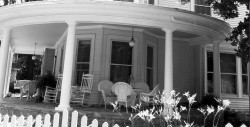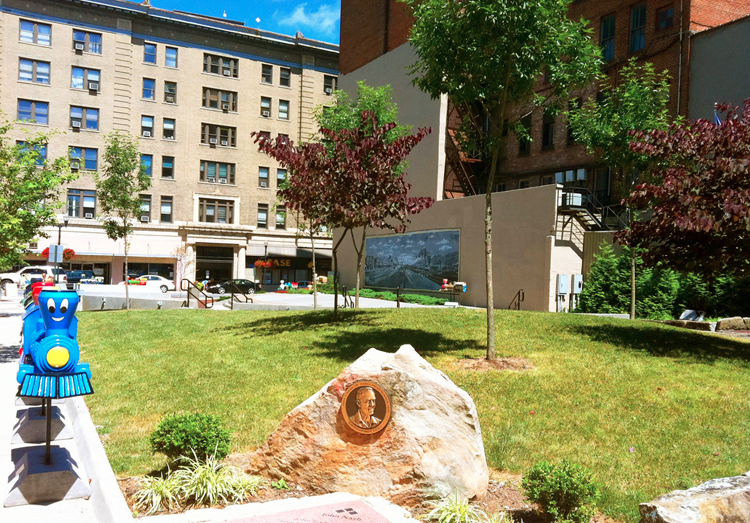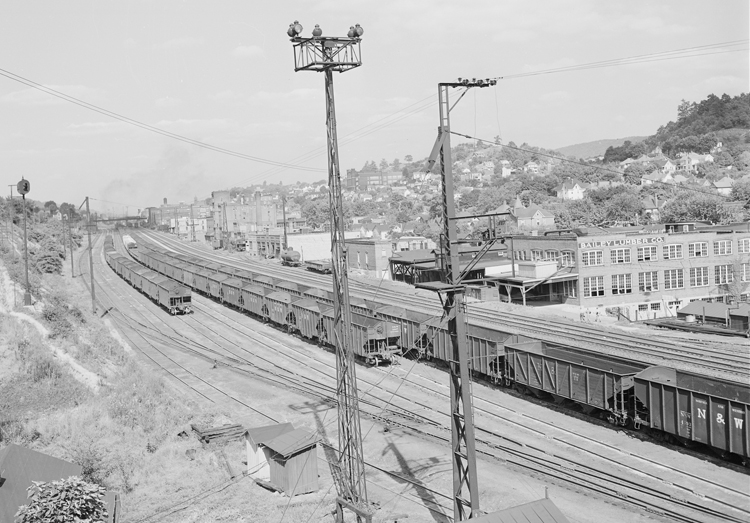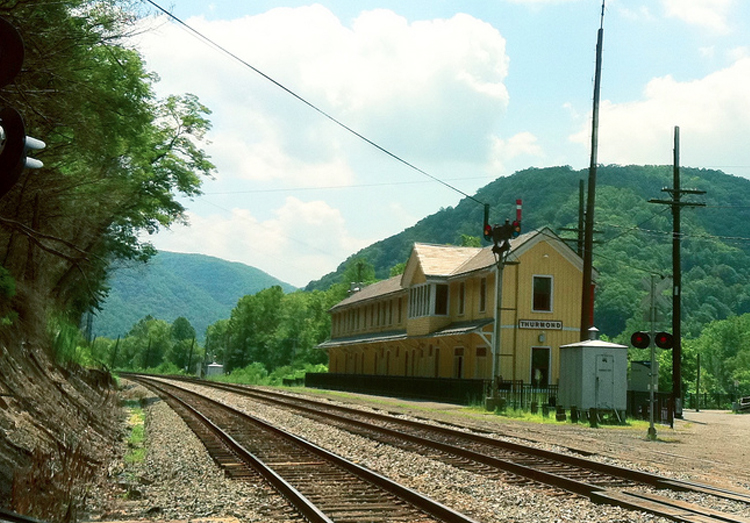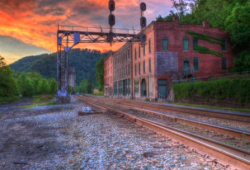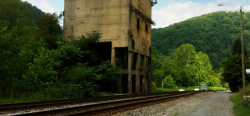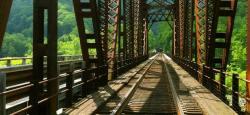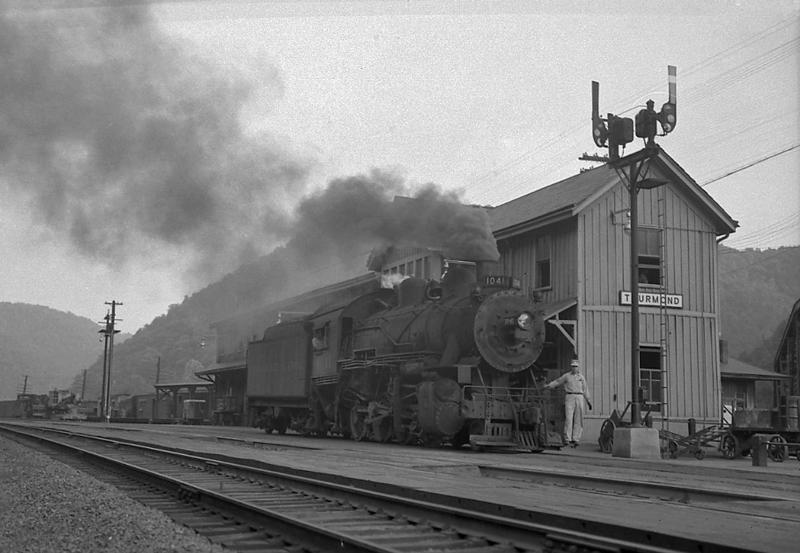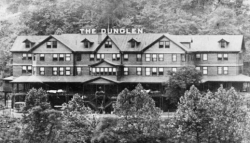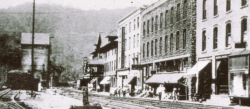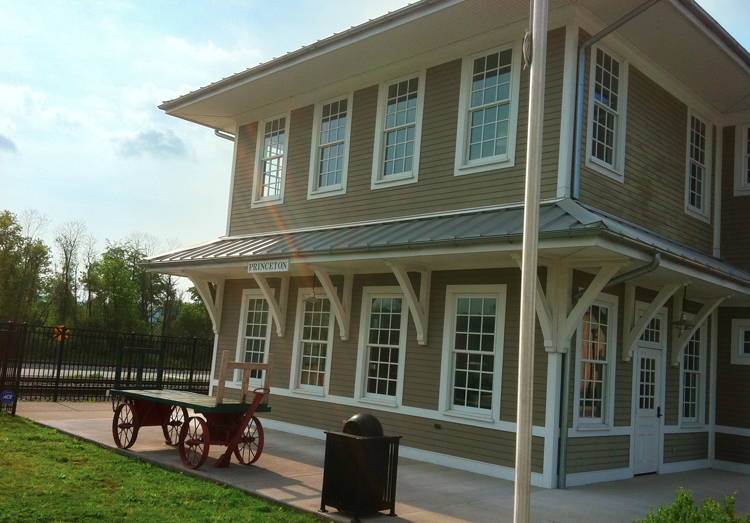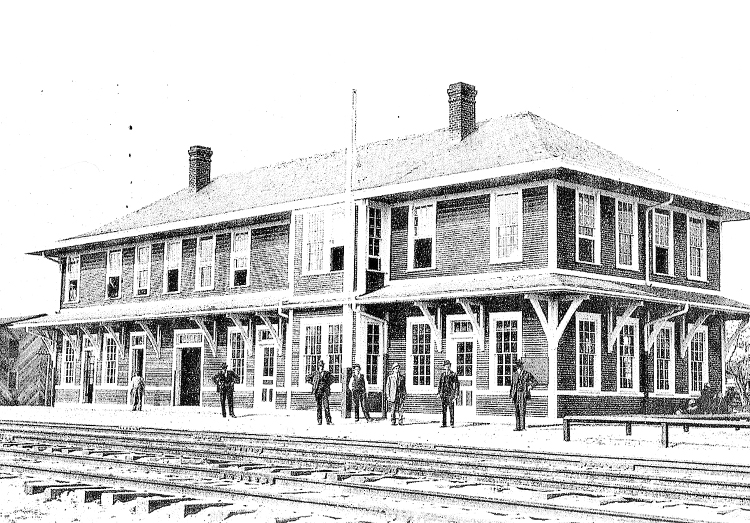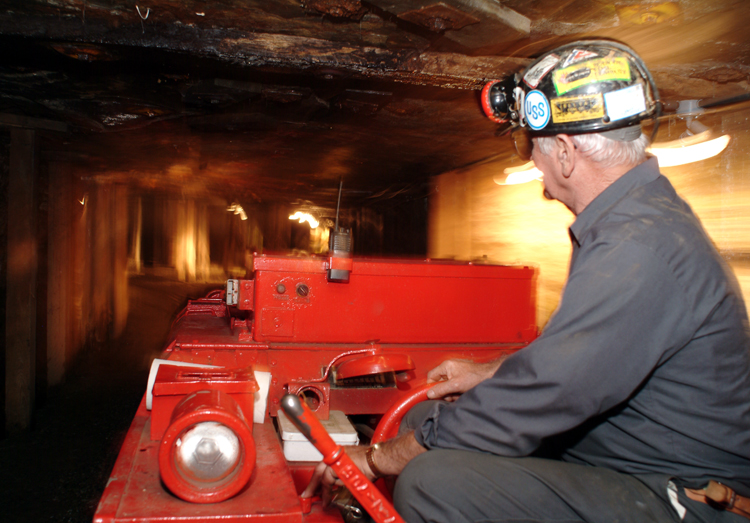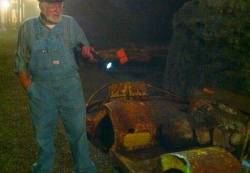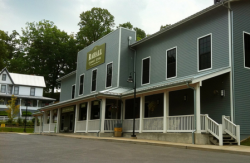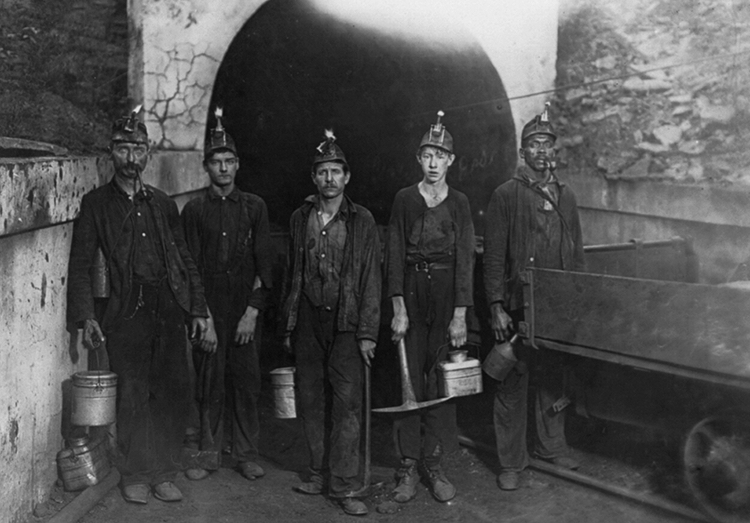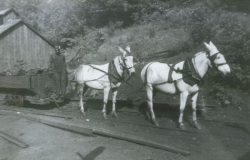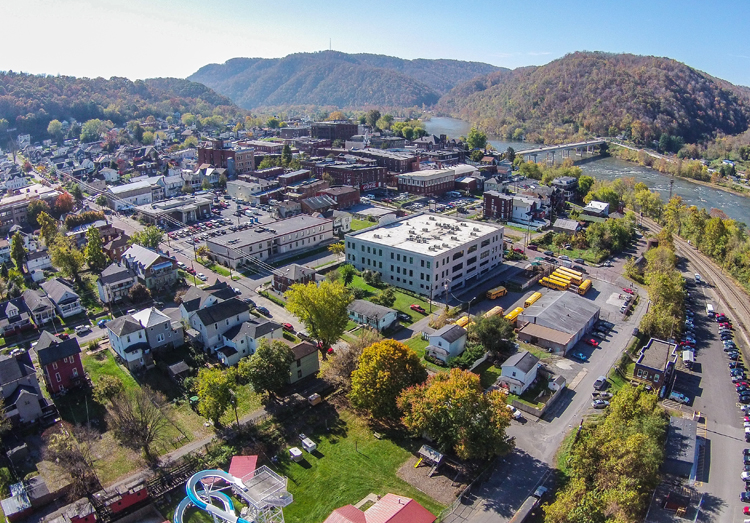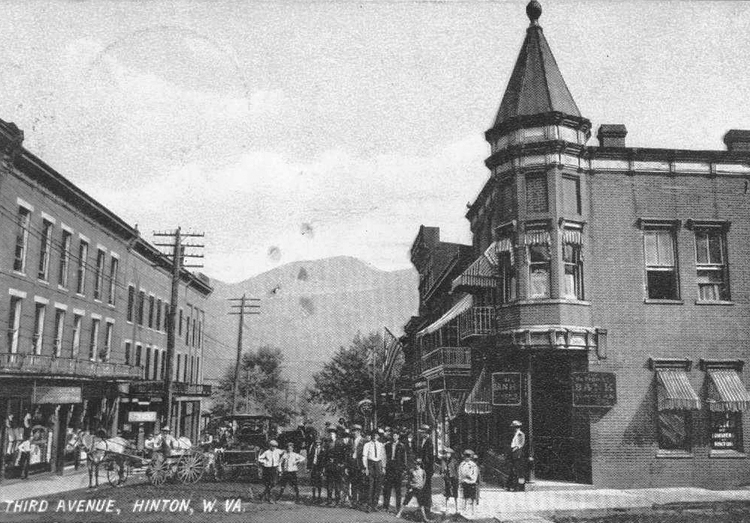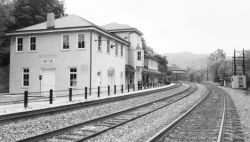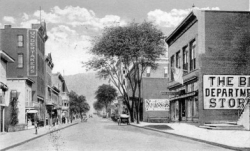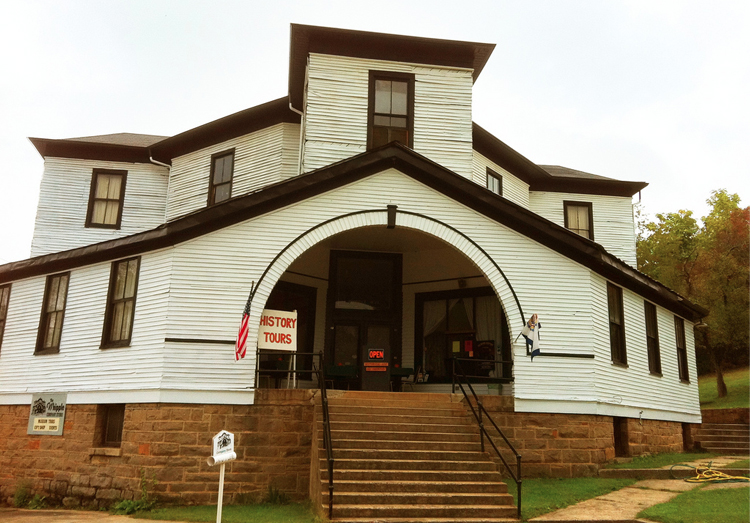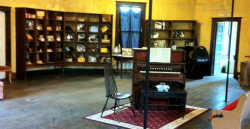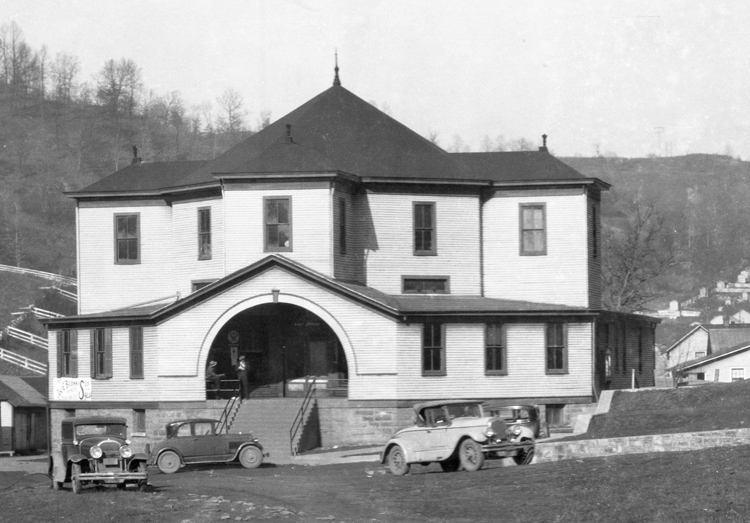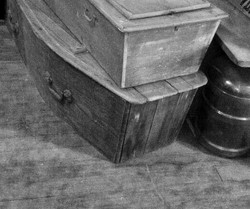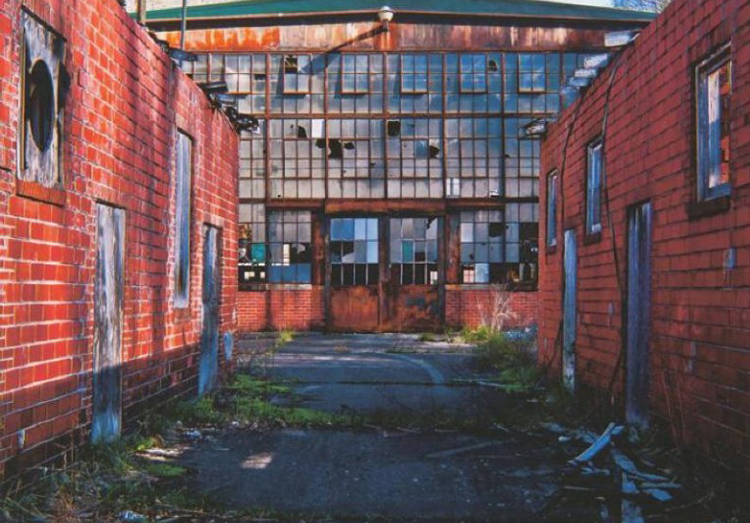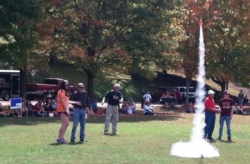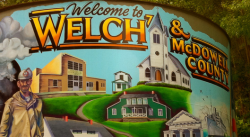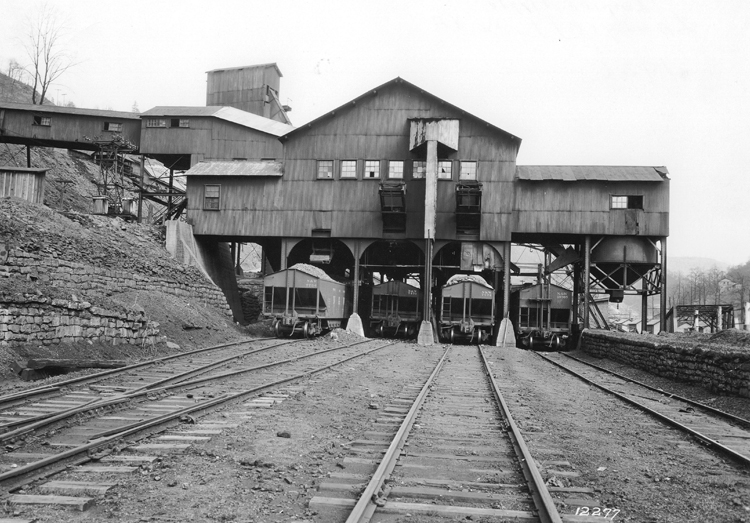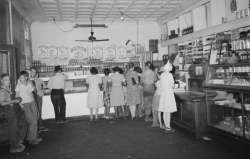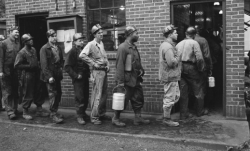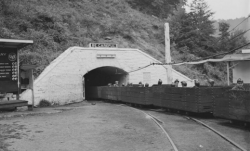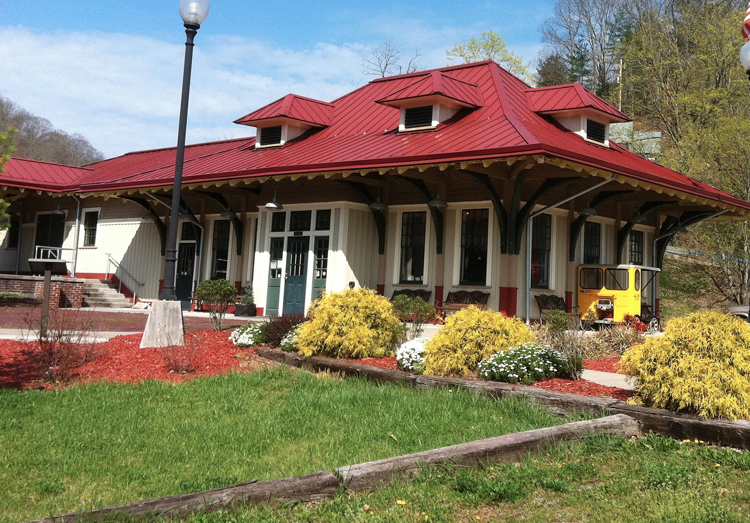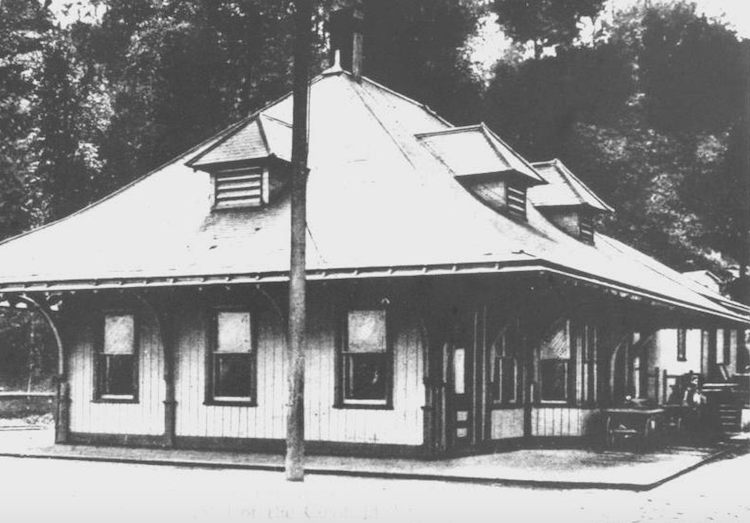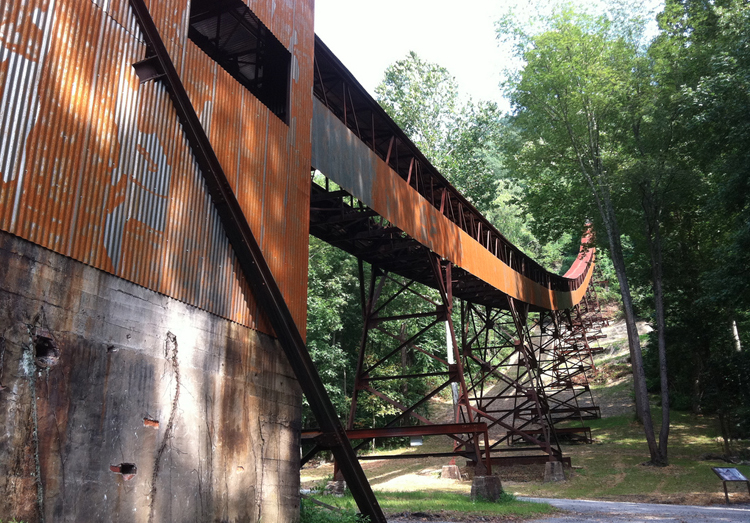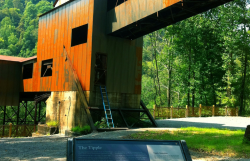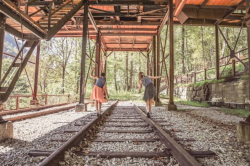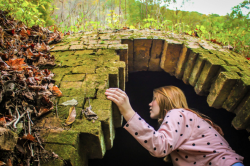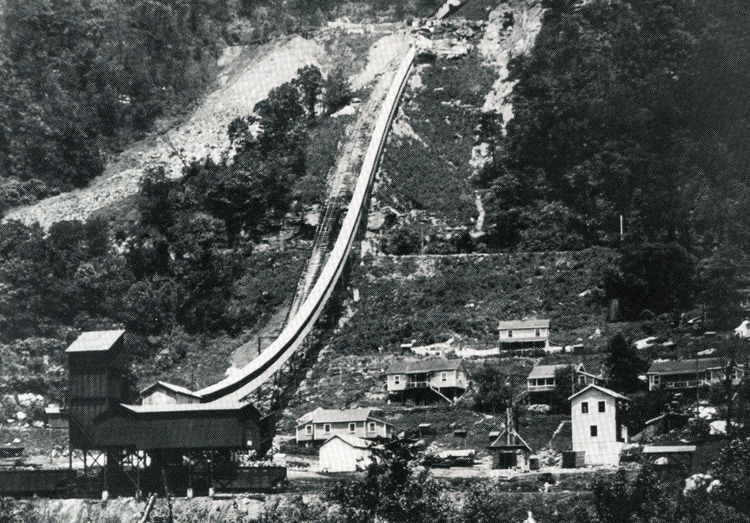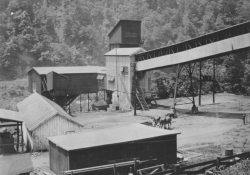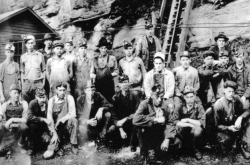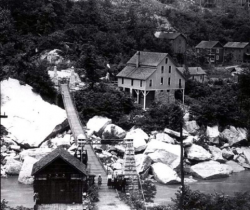1. Bluefield
mined 40% of North America's coal
History buffs can dig deeper into the town’s rich mining heritage at the Eastern Regional Coal Archives, where you’ll find artifacts and from the coal boom, including blueprints, coal scrip and more.
 The little Ridge Runner train will roll you along the rails at the city park.
The little Ridge Runner train will roll you along the rails at the city park.
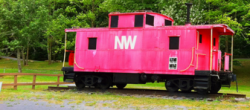 See the historic Norfolk & Western Caboose.
See the historic Norfolk & Western Caboose.
At its height, 60 million tons of coal passed though Bluefield a year.
That’s about the equivalent of 800+ blue whales— per day.
Keep in mind, a blue whale’s tongue alone weighs as much as an elephant.
2. Thurmond
Center of glamour (& grit)
3. Princeton
Richest Little Railroad in the World
The railway’s main machine shops were in Princeton, employing 800+ workers. The Virginia Railway Yard National Historic District preserves shops, engineering buildings and more.
Visit the Princeton Railroad Museum while you’re in town for events like the Princeton Autumnfest, Celebrate Princeton or the Princeton All Together Arts Week.
 Princeton is home to a unique baseball rivalry.
Princeton is home to a unique baseball rivalry.
“Nothing is too good for my railroad.”
-Virginian Railway funder, Henry Huttleston Rogers
Creating direct rail routes was an intensive process. 64% of the materials the rail builders sliced through to built the tunnels were solid rock. It was mostly hand-cut, then carted away by mules.
The unique approach paid off. When the Virginia Railroad’s main route began, there were no mines on the line. They opened 91 themselves, and helped develop 47 mines on connecting lines.
4. Beckley Exhibition Coal Mine
A real look underground
At the coal camp, you can explore a renovated church, coal house and school. There’s also a youth museum so the kids can learn hands-on. During the holidays, enjoy s’mores, decorations and other activities at Coal Town Christmas.
5. Hinton
Gateway to the gorge
Ride the rails on the New River Train to Hinton’s annual Railroad Days festival.
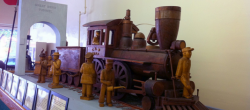 Explore C&O artifacts at the Railroad Museum
Explore C&O artifacts at the Railroad Museum
 Follow a folk hero’s footsteps. Retrace John Henry’s legendary contest.
Follow a folk hero’s footsteps. Retrace John Henry’s legendary contest.
The folk legend of the Steel Drivin’ Man, John Henry, was born at the nearby Big Bend Tunnel. Here, he challenged a steam drill— and won! But he passed away from exhaustion shortly after.
6. Whipple Company Store
a community's sole recource
The Whipple collection is always growing, because locals love to come in and share their family memories about the store. Learn about the day-to-day of mine culture through the lens of Whipple’s residents.
Roam the halls during haunted tours in October. Because the store was so central to mine life, there are literally hundreds of eerie tales about the place: ghostly cigar smoke, phantom footprints and more.
The Company Store was only place mine families could shop for everything— from candy to caskets.
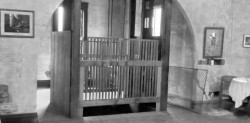 The lift to the basement and 3 floors was hand-operated, and it’s still intact today. Discover more of Whipple’s artifacts.
The lift to the basement and 3 floors was hand-operated, and it’s still intact today. Discover more of Whipple’s artifacts.
7. McDowell County
heart of the coal bin
The annual Rocket Boys October Sky Festival (now in Beckley to accommodate the large crowds) celebrates the heritage of the McDowell coalfields.
8. Bramwell
most millionaires in the nation
The Corner Shop is still open today, with its original woodwork and old-fashioned elegance.
The original marble soda fountain is the centerpiece– and it still works. Try a sip!
The annual Bramwell Oktoberfest is the longest-running beer festival in the state. Sample all the craft brews along the quaint cobblestone of the mansion-lined Millionaire Row.
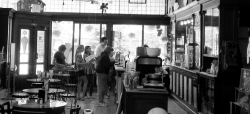
The Corner Shop had such high-end clientele, it became the 3rd store in the country to carry the elite Chanel No. 5 perfume.
There was so much money in Bramwell’s banks, the janitor would wheel large leather bags of cash down the streets in a wheelbarrow.
Coal baron I.T. Mann’s mansion has a hidden safe, a leather studded den and “playhouse” for his children the size of a home.
